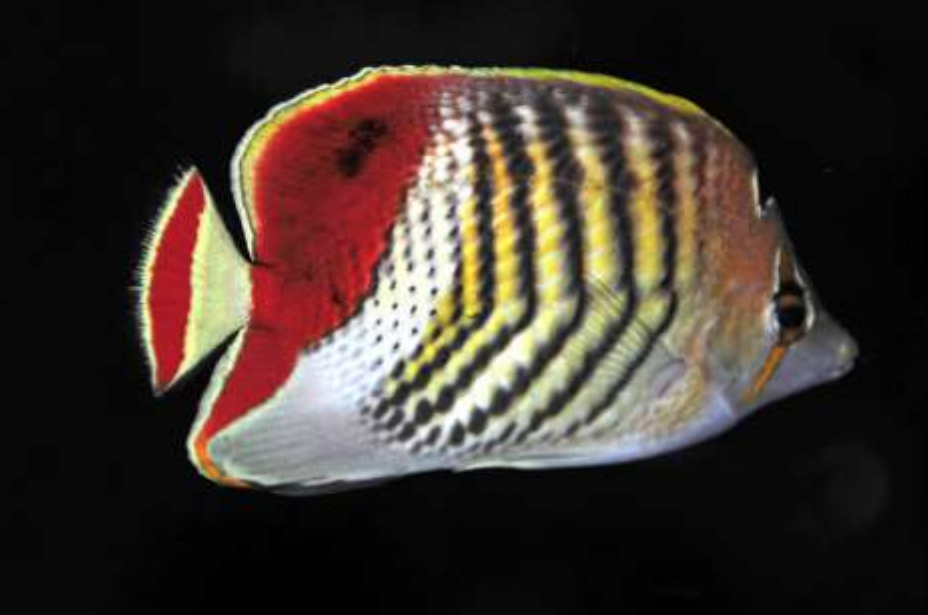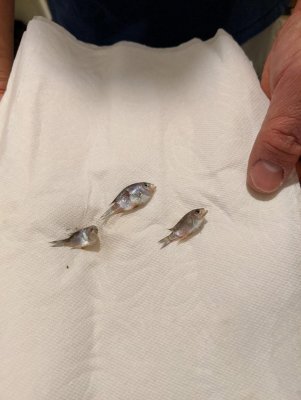4FordFamily
Tang, Angel, and Wrasse Nerd!
View BadgesStaff member
Super Moderator
Partner Member 2024
Excellence Award
Reef Tank 365
Expert Contributor
Article Contributor
Hospitality Award
INDMAS Member
My Tank Thread
Uronema seems to impact more fish today than it ever did before. Uronema is particulalry troublesome for many reasons. It is particularly deadly, when it's identified it is often too late to treat, and it's an internal and external parasite. Most alarming for many, is that it does not have a fallow period like ich or velvet, so a fishless tank will not fix the issue. In other words, it can "live without a host".
The fish most commonly affected/associated are chromis. It is also common in butterflies (particularly copperband, pearlscale, etc.) and anthias as well. Recently, centropyge (dwarf angels) are seemingly more impacted by it, and I've even seen it in some wrasses. @Humblefish has looked at some assumed "spinal injuries" in wrasse and found that internal uronema was present on the spine itself upon autopsy, so it's hypothesized that it's a bigger issue than we thought. However...
I personally don't think it poses much of a threat to a display tank full of healthy, established inhabitants. It seems to run rampant through new additions, particularly of those groups of fish. When we (@HotRocks and I) quarantine, we treat it with metroplex up front (which also handles brooklynella).
So what do you do with this information?
"Ignore":
A healthy, established fish in a tank seems to be "immune" (resistant) to it. In practice, I've never seen uronema suddenly appear on healthy, established fish in the display tank. Even existing chromis seem unaffected, typically. I don't personally worry about uronema for anything other than new additions. I do run all coral, inverts, rock, etc. through a 72 day fallow period, but I certainly don't bleach it, which is a tried and true method for killing uronema. So for that, I probably introduce it in to my "clean" display tanks.
I treat all new fish as if they have it to be safe. I do this more to keep new fish and others sharing the quarantine with it safe from uronema. Don't misunderstand, uronema is a NASTY condition. It's very deadly, but again, for whatever reason I've not seen it harm well-established fish, even of typically vulnerable species, say 3-6 months after addition.
Eradicate:
I call this going nuclear... If you want to do so, bleach is a tried and true method of killing off uronema. Some people opt to bleach everything and start over. However, if you're not prepared to keep it out of the tank long-term and prophylactically treat fish for it before entering your tank properly going forward, I'd say it's a waste of effort. Perhaps more importantly, remember that you would have to bleach everything wet that entered your tank from now on, as well for 100% effectiveness. Perhaps it's an unlikely event that you could get uronema from inverts, rock, or coral -- but it's certainly possible. If you bleach these new additions, you'll likely kill whatever you're adding. I don't think this is necessary but this is my own arbitrary opinion and almost solely based on anecdote/experience and observation from monitoring the R2R disease forum.
Admittedly though, I've learned the hard way over the past 18 months how much more virulent it is these days. Whether that's because of the overall weakened/worsened condition of the fish we receive today or because the uronema itself is truly more virulent -- I do not know. Perhaps both.
My Choice:
I choose to quarantine and treat all new fish, run coral/inverts fallow (which doesn't impact uronema for the inverts or coral), but not worry about the impact it may have on my display tanks. I avoid bleaching anything, or starting over, to keep it out. We of course may choose our own paths!
For those wanting more info about Uronema, here is a link to an article: (edit by Jay Hemdal)

 www.reef2reef.com
www.reef2reef.com
The fish most commonly affected/associated are chromis. It is also common in butterflies (particularly copperband, pearlscale, etc.) and anthias as well. Recently, centropyge (dwarf angels) are seemingly more impacted by it, and I've even seen it in some wrasses. @Humblefish has looked at some assumed "spinal injuries" in wrasse and found that internal uronema was present on the spine itself upon autopsy, so it's hypothesized that it's a bigger issue than we thought. However...
I personally don't think it poses much of a threat to a display tank full of healthy, established inhabitants. It seems to run rampant through new additions, particularly of those groups of fish. When we (@HotRocks and I) quarantine, we treat it with metroplex up front (which also handles brooklynella).
So what do you do with this information?
"Ignore":
A healthy, established fish in a tank seems to be "immune" (resistant) to it. In practice, I've never seen uronema suddenly appear on healthy, established fish in the display tank. Even existing chromis seem unaffected, typically. I don't personally worry about uronema for anything other than new additions. I do run all coral, inverts, rock, etc. through a 72 day fallow period, but I certainly don't bleach it, which is a tried and true method for killing uronema. So for that, I probably introduce it in to my "clean" display tanks.
I treat all new fish as if they have it to be safe. I do this more to keep new fish and others sharing the quarantine with it safe from uronema. Don't misunderstand, uronema is a NASTY condition. It's very deadly, but again, for whatever reason I've not seen it harm well-established fish, even of typically vulnerable species, say 3-6 months after addition.
Eradicate:
I call this going nuclear... If you want to do so, bleach is a tried and true method of killing off uronema. Some people opt to bleach everything and start over. However, if you're not prepared to keep it out of the tank long-term and prophylactically treat fish for it before entering your tank properly going forward, I'd say it's a waste of effort. Perhaps more importantly, remember that you would have to bleach everything wet that entered your tank from now on, as well for 100% effectiveness. Perhaps it's an unlikely event that you could get uronema from inverts, rock, or coral -- but it's certainly possible. If you bleach these new additions, you'll likely kill whatever you're adding. I don't think this is necessary but this is my own arbitrary opinion and almost solely based on anecdote/experience and observation from monitoring the R2R disease forum.
Admittedly though, I've learned the hard way over the past 18 months how much more virulent it is these days. Whether that's because of the overall weakened/worsened condition of the fish we receive today or because the uronema itself is truly more virulent -- I do not know. Perhaps both.
My Choice:
I choose to quarantine and treat all new fish, run coral/inverts fallow (which doesn't impact uronema for the inverts or coral), but not worry about the impact it may have on my display tanks. I avoid bleaching anything, or starting over, to keep it out. We of course may choose our own paths!
For those wanting more info about Uronema, here is a link to an article: (edit by Jay Hemdal)
Uronema / Red Band Disease - Hemdal
Red Band Syndrome in Marine Fishes: Caused by the Protozoan; Uronema sp. Jay Hemdal Introduction: This moderately common disease of certain species of marine fish is so often misdiagnosed that most aquarists apply incorrect treatment methods...
 www.reef2reef.com
www.reef2reef.com
Last edited by a moderator:




















